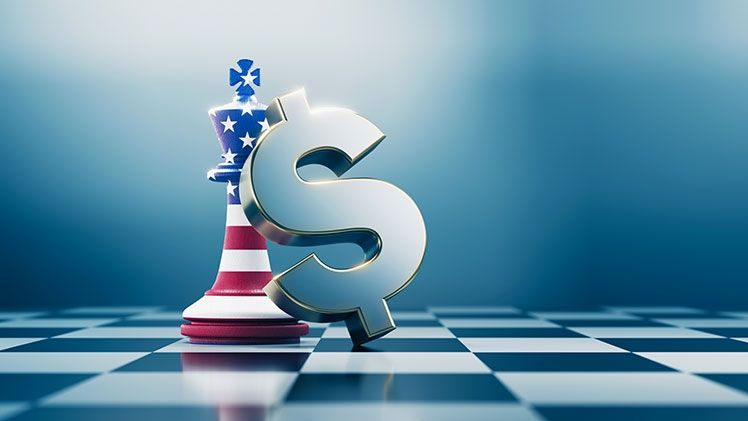Donald Trump and his bankers
- 2025.16.10
- 0
- Download the publication (PDF - 273,99 KB)

Read the article
Donald Trump is obsessed with the US trade deficit, which he blames on what he sees as unfair competition from surplus countries – such as China and Germany – at the expense of American interests. In his logic, protectionism and tariff barriers are a necessary and, as he sees it, effective lever for rebalancing bilateral trade. However, the trade war launched by Trump during his first term highlighted the limitations of this approach. Contrary to expectations, the trade deficit has not narrowed; if anything, it has widened. While tariffs may temporarily slow imports, they do not address the root of the problem, namely the structural domestic savings deficit. In other words, the United States is living beyond its means and must rely on foreign savings to maintain its standard of living.
The twin deficits – budget and external – have so far been financed without difficulty thanks to foreign investors’ sustained appetite for dollar-denominated assets. As issuer of the main global reserve currency – the dollar – and provider of risk-free assets – Treasuries – the US plays a central role in the international monetary system. This dominant position helps support global demand for dollar-denominated reserve assets, enabling the US to borrow from overseas investors on preferential terms. This is what’s known as the “exorbitant privilege” enjoyed by the US by virtue of its own currency being the international reserve currency.
However, this recycling of global savings in US markets hinges on the confidence placed in dollar-denominated assets. This confidence is sensitive to shared emotional dynamics: it can fluctuate with the perceptions and beliefs that influence investor behaviour. That means episodes of fear or doubt – linked to political instability, the risk of a budget crisis or a loss of US institutional credibility – could weaken this confidence, prompting investors to shun US assets or demand higher risk premiums and thus endangering the US’s ability to borrow more cheaply in international markets.
To illustrate this point, reactions to the tariff announcements on “Liberation Day” offered a glimpse of what might happen if confidence in the dollar were to erode. Traditionally, dollar-denominated assets serve as a safe haven at times of uncertainty, causing the dollar to strengthen and interest rates to fall. This time around, the opposite happened: the dollar declined and bond markets tightened, signalling the beginnings of investor panic. This growing distrust of dollar assets is a warning sign, made all the more worrying by the unpredictability of Trump’s actions and policies, which are hardly conducive to a lasting climate of confidence. In this connection, it’s worth remembering that around one third of market-tradeable US debt is held by foreign investors, which means any change in sentiment could have major repercussions.
Investors are concerned by Trump’s repeated attacks on the Fed’s independence. Subjecting monetary policy to that kind of pressure is liable to compromise its credibility, particularly if it results in artificially low interest rates out of step with prevailing economic conditions. Mounting inflationary pressures could then cause expectations to become unanchored, prompting investors to demand a higher inflation premium to make up for the erosion in the real value of their bond portfolios.
Similarly, the weak dollar policy advocated by Trump – under the influence of his economic adviser Stephen Miran, now a member of the Fed’s Board of Governors – could undermine the dollar’s credibility as the international monetary system’s base currency. His proposed Mar-a-Lago Accord, inspired by the Plaza and Louvre Accords of the 1980s, aims to orchestrate a dollar depreciation while putting pressure on official creditors to invest in zero-coupon 100-year Treasuries. The possibility of this kind of disguised restructuring of debt risks compromising the attractiveness of dollar-denominated assets.
By dint of being pressured by the world’s leading financial power through policies of intimidation and even extortion, the US’s creditors could prove less inclined to cheaply finance American budgetary largesse. Rising risk premiums could jeopardise the sustainability of the debt trajectory, forcing the authorities to make unpopular political choices. Moreover, while the idea that there is no credible alternative to the dollar remains valid today, from a longer-term perspective it is more of a belief than a historical certainty: key currencies are not immortal. In any event, Donald Trump would do well to meditate on the commonsense principle that it’s always best to stay on good terms with one’s banker.

By dint of being pressured by the world’s leading financial power through policies of intimidation and even extortion, the US’s creditors could prove less inclined to cheaply finance American budgetary largesse.
Isabelle JOB-BAZILLE, Group Chief Economist
